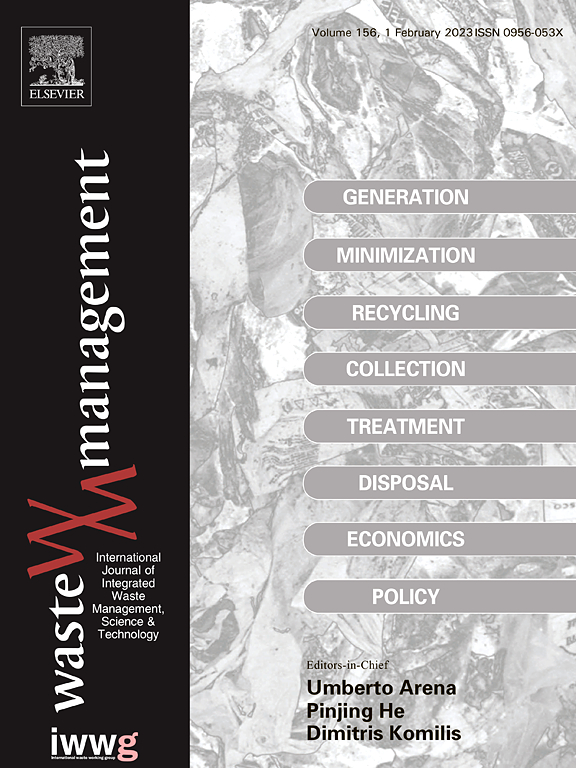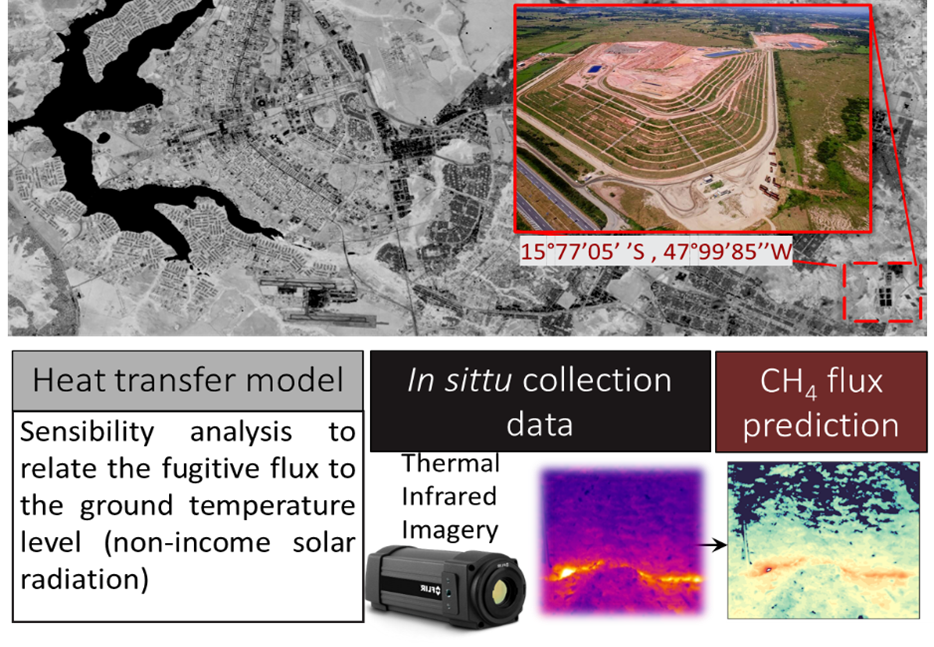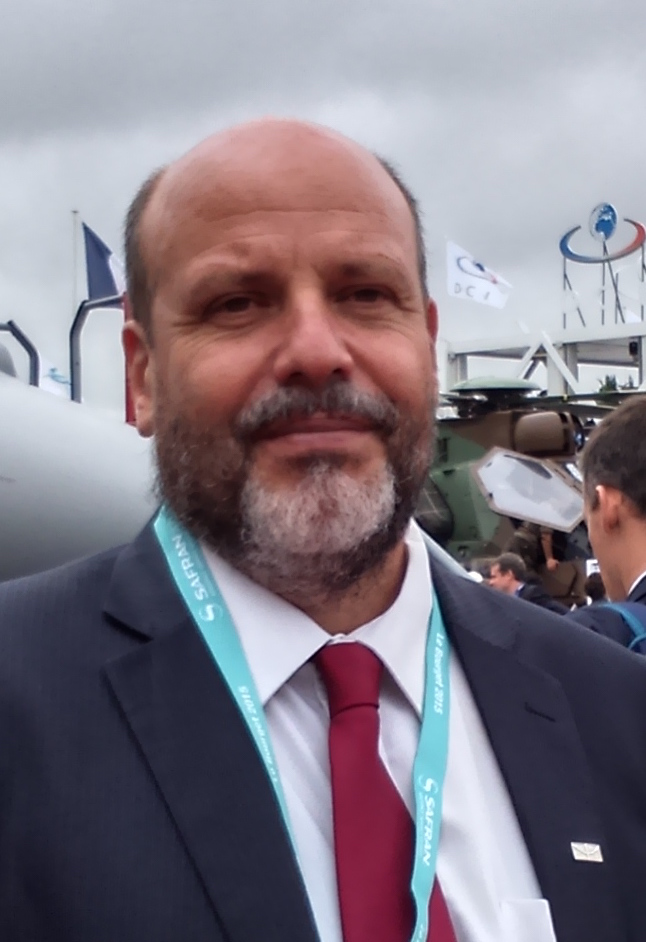
Landfill gas (LFG) is related to the biochemical processes generating heat and releasing CH4, CO2, and other gases in lower concentrations, which result in environmental impacts and risk of local explosion. Thermal infrared imagery (TIR) is employed to detect CH4 leakage as a risk control approach. However, the challenge for LFG leakage detection using TIR is establishing a relation between the gas flux and the ground temperature. This study evaluates the problem of a heated gas flowing through a porous medium column where the upward surface exchanges heat by radiation and convection to the environment. A heat transfer model that considers the upward LFG flow is proposed, and a sensibility analysis is developed to relate the flux to the ground temperature level in the condition of non-income solar radiation. An explicit equation to predict CH4 fugitive flow as a function of temperature anomalies of the ground was presented for the first time. The results show that the predicted ground surface temperatures are consistent with the literature’s experimental observations. Moreover, the model was complementarily applied to a Brazilian landfill, with in situ TIR measurements in an area with a slightly fractured cover. In this field observation, the predicted CH4 flux was around 9025 g m−2 d−1. Model limitations concerning the soil homogeneity, the transient variation of atmospheric conditions or local pressure, and soil temperature difference in low-flux conditions (related to TIR-cameras accuracy) require further validation. Results could help landfill monitoring in conditions of a high-temperature ground anomaly in dry seasons.



